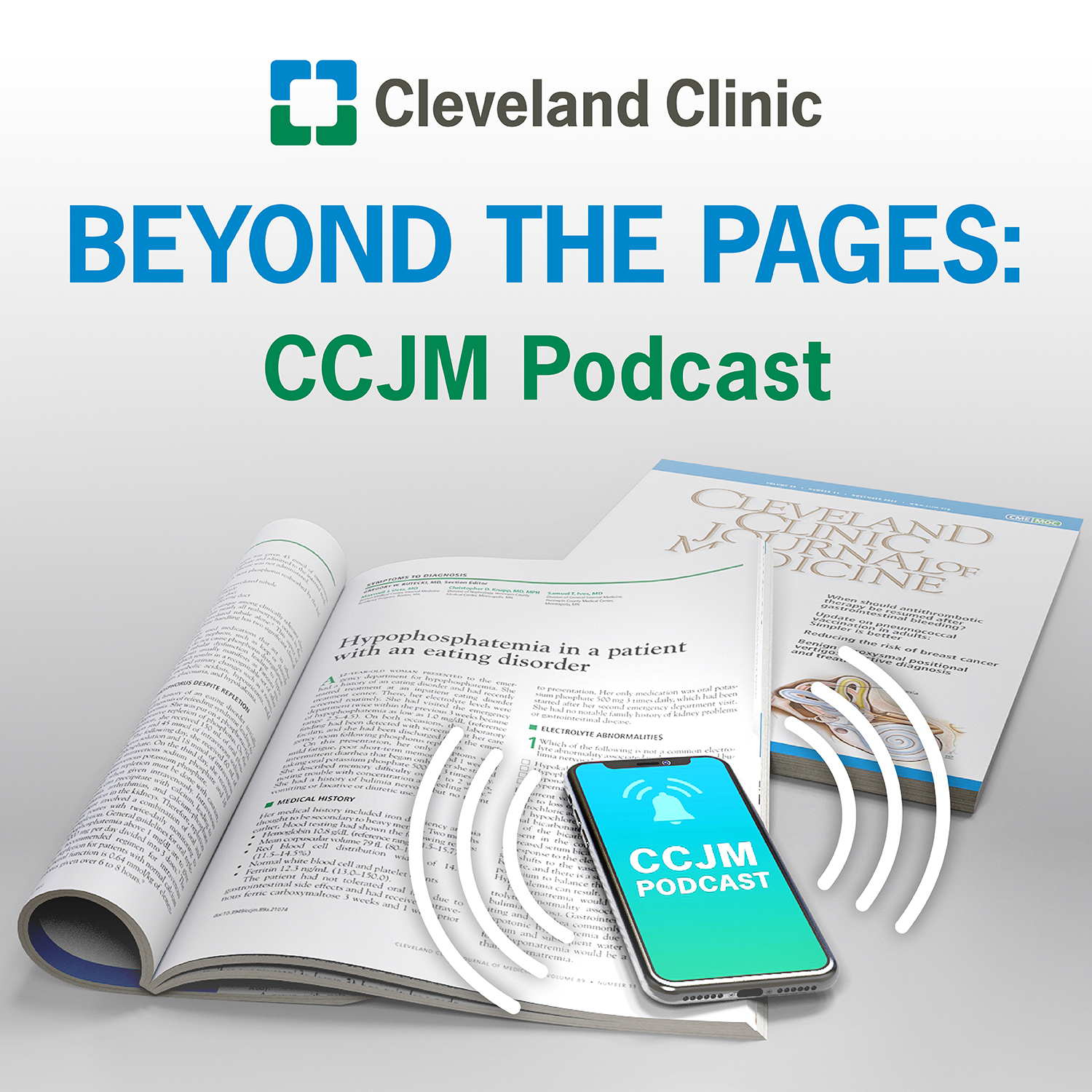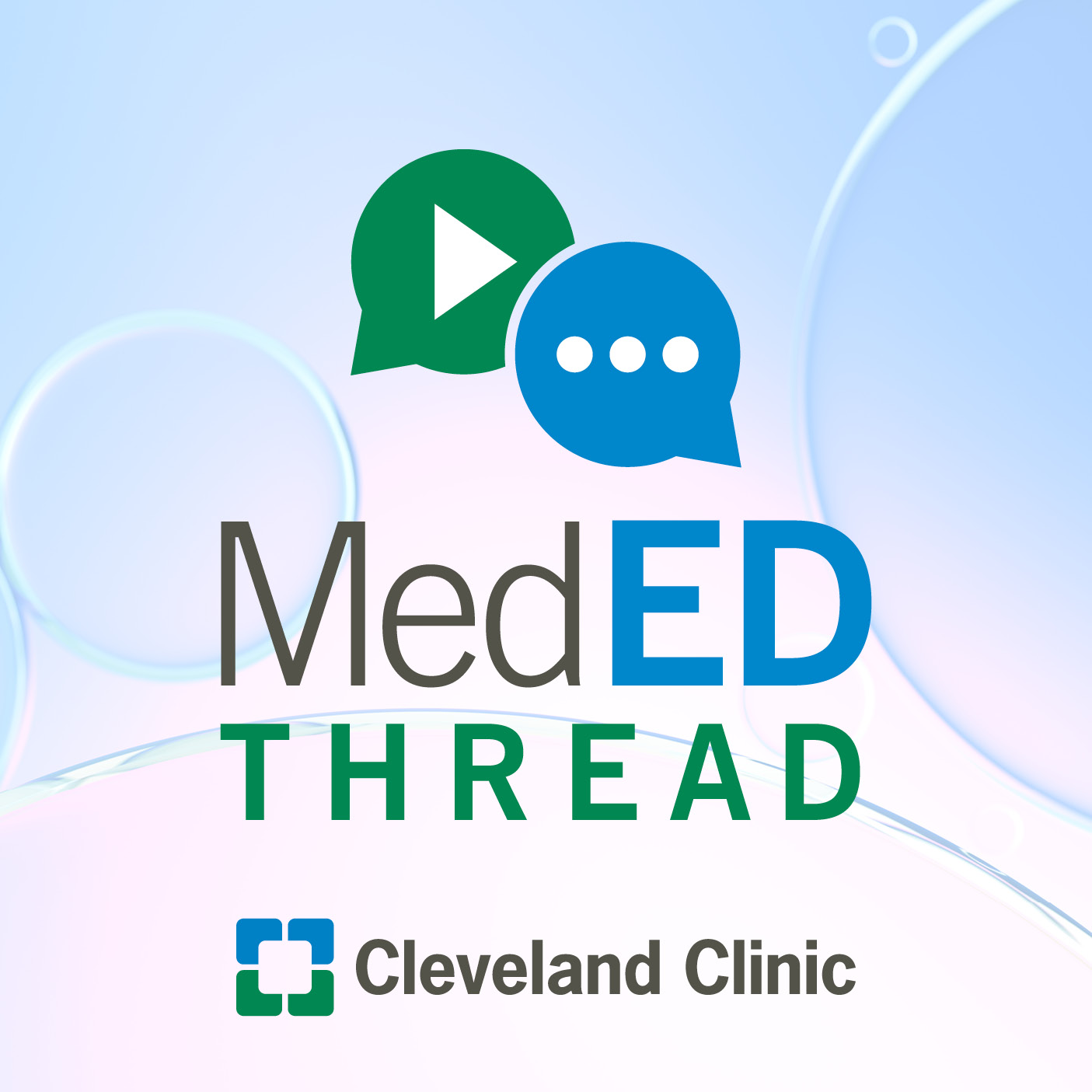The Blood Thinner Brief With Dr. Dana Angelini

In this episode of Medicine Grand Rounders, we're joined by hematologist extraordinaire Dr. Dana Angelini, who goes over the do's and don'ts of anticoagulation for the Internal Medicine Physician. Moderated by: Seysha Mehta, MS3.
Subscribe: Apple Podcasts | Podcast Addict | Buzzsprout | Spotify
The Blood Thinner Brief With Dr. Dana Angelini
Podcast Transcript
Seysha Mehta: Dr. Angelini, thank you so much for joining us today. To start, I know many people have trouble understanding the coagulation cascade. Could you briefly discuss the coagulation pathways and where anticoagulation therapy acts in general?
Dr. Dana Angelini: First, I want to thank you or this invitation and opportunity to discuss coagulation and anticoagulation with you all. As we all know, the coagulation cascade is a complex process involving multiple steps to achieve hemostasis at the site of a vascular injury. In brief, primary hemostasis involves the exposure of collagen from the subendothelium and the release of vWF. vWF binds to exposed collagen and facilitates platelet adhesion via the platelet receptor GP1b complex. Platelet adhesion then triggers platelet activation and platelet aggregation. The activated platelets release molecules such as thromboxane A2 and ADP, which further recruit and activate additional platelets to the site of injury. Platelet aggregation is mediated by the platelet receptor GPIIb/IIIa which is the platelet receptor. This primary hemostasis process serves as the scaffold, if you will, for secondary hemostasis. The platelet phospholipids provide a surface for the assemble of what is termed the “Tenase” complex, which is the process of activated factor IX and activated VIII activate factor X on the phospholipid surface. Once factor X is activated, it combines with factor V to form the prothrombinase complex, which converts prothrombin (factor II) to thrombin (factor IIa). Thrombin plays a crucial role in converting fibrinogen to fibrin as well as amplifying the coagulation process. Once fibrin is formed, it is cross-linked for stabilization by factor XIII. Fibrin leads to the stabilization of the platelet plug.
Bringing your attention to coagulation proteins higher than the tenase complex you’ll want to remember the extrinsic pathway and the intrinsic pathway, both of which converge to the common pathway. The extrinsic pathway is initiated by tissue factor which is exposed at site of vascular injury. Tissue factor binds to activated VII which then works to activate factor X to Xa. The intrinsic pathway is initiated by the activation of factor XII, which sequentially activates factors XI, IX, and VIII, leading to the activation of factor X
With that light backdrop, we can now discuss the targets of our anticoagulant drugs. The currently approved and most used agents in the US work in some fashion to inhibit proteins of the common pathway.
Coumadin- inhibits the gamma carboxylation of vitamin K-dependent clotting factors (C, S, II, VII, IX and X).
LMWH (enoxaparin, fondaparinux, daltaparin)- inhibits coagulation by activating antithrombin. Antithrombin inhibits factor Xa and IIa.
Direct oral anticoagulants (edoxaban, rivaroxaban, apixaban, betrixaban, dabigatran)- the agents with “Xa” in their name inhibit just that! Dabigatran is an oral agent that inhibits IIa
Heparin also works by potentiating the effect of antithrombin
Argatroban and bivalirudin are both IV direct thrombin inhibitors
Seysha Mehta: Thank you for that recap. It’s always helpful to review these complicated and important pathways. There are many anticoagulant options available to us today. Could you go over some of the major categories of anticoagulants available and when you would consider using them?
Dr. Dana Angelini: Yes, this is a very important question that affects many aspects of internal medicine and is honestly one the clinical decisions I like most about being a classical hematologist- which blood thinner is right for my patient? It is decision that takes many considerations into account, the first of which is “what is the indication for anticoagulation”? this is my first starting point as there are some specific blood thinner recommendations for certain conditions. A few examples include triple + APS- data supports use of VKA in this setting. Heparin-induced thrombocytopenia- in the hospital IV direct thrombin inhibitors are used until clinical stabilization. Cancer thrombosis- there is data to support the anti Xa DOACs over LMWH or VKA in regard to reducing the risk of recurrent VTE. I also take their co-morbidities into consideration such as underling liver or renal disease/recent bleeding issues or known bleeding disorder. Knowing the half-life of the drugs is important as well as considering any upcoming procedures or surgeries. Patient preference and cost of medications are also very important aspects of the decision-making.
Seysha Mehta: It’s amazing to see how many different options of anticoagulation therapy we have. One thing that still confuses me is when to use anticoagulation therapy versus antiplatelet therapy. In clinical practice, how do you decide between using anticoagulants and antiplatelet agents?
Dr. Dana Angelini: I think the role of anticoagulant therapy vs antiplatelet therapy is the most vague when it comes to thrombosis in arterial beds. In the setting of APS and arterial thrombosis, we typically treat with anticoagulation and usually prefer coumadin. Arterial thrombosis in the setting of HIT is also treated with systemic anticoagulation. Other settings of arterial thrombosis may be treated with blood thinner initially, but most get transitioned to or are started out on anti-platelet therapy- think secondary stroke prevention, post-cardiac PCI, or peripheral artery disease. In the setting of venous thromboembolism, we are using anticoagulants rather than antiplatelets for upfront treatment. I think again you need to take a step back and ask yourself the question, “What is the indication for thinning the blood?
Seysha Mehta: This information really helps when considering antiplatelet versus anticoagulation therapy depending on the clinical context and patient risk factors. At the Cleveland Clinic, we certainly have many complicated patient cases. We often need to balance appropriate DVT prophylaxis for long hospital stays versus appropriate anticoagulation discontinuation before surgery. Could you touch on how to choose appropriate DVT prophylaxis for patients in the hospital setting and considerations regarding peri-operative anticoagulation use?
Dr. Dana Angelini: There have been several studies that show the benefit of VTE prophylaxis in high risk hospitalized patients. The American Society of Hematology (ASH) guidelines recommend pharmacological prophylaxis with LMWH or UFH for critically ill medical patients, emphasizing the importance of assessing the risk of bleeding. Mechanical prophylaxis, such as graduated compression stockings or intermittent pneumatic compression, is suggested for patients at high risk of bleeding.
A recent systematic review and network meta-analysis by Eck et al. evaluated various anticoagulants for VTE prophylaxis in acutely ill hospitalized patients. The study included 44 randomized controlled trials and found that intermediate-dose low-molecular-weight heparin (LMWH) provided the best balance of benefits and harms, reducing symptomatic VTE with a moderate increase in major bleeding. The report of this is a bit surprising to me as the doses suggested are 40-60mg LMWH BID which is higher than our current standard of LWMH 40mg daily or UFH 5000 units Q 8 or Q 12 hr. note very low to low quality evidence and bleeding rates were higher with intermediate dose of blood thinner. no mortality benefit has been shown.
Low molecular weight (LMW) heparin is generally the preferred anticoagulant based upon randomized trials that suggest it is superior for preventing deep vein thrombosis (DVT). For those with renal failure or when a shorter half-life is preferred, unfractionated heparin (UFH) is a reasonable alternative.
Low-dose Fondaparinux may be used as an alternative to heparin in patients with a history of heparin-induced thrombocytopenia
In summary, pharmacologic prophylaxis with LMWH or UFH is recommended for most hospitalized patients at risk for VTE
Perioperative considerations on how long to hold VTE prophylaxis include bleeding risk of the procedure (brain surgery?), half-life of agent, and clearance of blood thinner (? Reduced renal function). We often work directly with the surgeons to come up with a perioperative anticoagulation plan.
Moderator: That makes a lot of sense! Could you discuss the role of reversal agents in anticoagulation therapy, particularly in emergency situations?
Dr. Dana Angelini: Great question! The easiest blood thinners to reverse are Coumadin and heparin, with PCC/vitamin K to reverse Coumadin and protamine to reverse heparin. LMWH is only partially reversible by protamine, whereas fondaparinux is not reversible by protamine and other agents should be considered. Andexanet alfa is approved for the reversal of Xa inhibitors with life-threatening bleeding with specific approval for apixaban and rivaroxaban. Dabigatran has its own reversal agent: idarucizumab. it is important to know which agents your hospital has- in the setting where Andexanet alfa is not available, prothrombin complex concentrate is given for the reversal of anti Xa agents. many hospitals have algorithms and best practices documents in place to guide anticoagulant reversal decisions, so you may want to see if your center has such a document
Moderator: Beyond these scenarios, what are some general considerations for managing anticoagulation in hospitalized patients versus those in an outpatient setting?
Dr. Dana Angelini: In the hospital setting, anticoagulation management often involves acute conditions requiring rapid intervention, frequent monitoring, and potential adjustments based on dynamic clinical changes. For instance, intravenous unfractionated heparin allows for quick titration in unstable patients and offers a short half-life prior to procedures or in the setting of bleeding event. outpatient management focuses on chronic anticoagulation, emphasizing patient education, adherence, and regular monitoring, especially for medications like warfarin that require INR checks. The advent of DOACs has simplified outpatient management due to fixed dosing and fewer dietary interactions, though renal/liver function monitoring remains essential.
Moderator: That’s an important distinction for considering inpatient versus outpatient anticoagulation. I know that there are some exciting advancements currently underway in the field of anticoagulation! Could you touch on some of these new agents and the benefits they have?
Dr. Dana Angelini: Yes, the field of anticoagulation is likely to expand in the coming years. we have come a long way since 2011/2012 when the DOACs started to get approved. Prior to that all we had was Coumadin and parenteral anticoagulants. Still, the doacs all come with the risk of bleeding, so the newer approach is to find drugs that prevent thrombosis that do not increase the risk of bleeding. Agents currently under studies include monoclonal XI inhibitors and there have been some recent publication in the NEJM using one such XI antibody, abelacimab, for the prevention of VTE after knee replacement surgery and another study was published looking at this agent in the context of afib and igh risk of stroke. This study reported the treatment with abelacimab resulted in markedly lower levels of free factor XI and fewer bleeding events than treatment with rivaroxaban. The exciting detail was that The trial was stopped early on the recommendation of the independent data monitoring committee because of a greater-than-anticipated reduction in bleeding events with abelacimab. This agent is currently being studied in cancer patients who have a high risk of VTE as well as high risk of bleeding. other agents under development include factor XII inhibitors and a parenterally administered glycoprotein VI antiplatelet agent (glenzocimab) is currently being studied in patients with ischemic stroke.
Moderator: Before we conclude, do you have any key takeaways for our listeners regarding anticoagulation management?
Dr. Dana Angelini: Thank you again for taking the time to review this complex and dynamic field. It’s been a pleasure to review some important topics as it relates to anticoagulation with you today. I think some take-home points include choosing the correct anticoagulation agent for your patients requires individualized patient assessment, which takes into account many aspects of their clinical situation. Weighing the balance of thrombosis and bleeding can be dynamic and should be reassessed often. I also think knowing the details of the anticoagulant agents available to us is very important such as approved indications, half-life of the drugs, reversibility, and drug clearance considerations. It is also important to stay updated with evolving guidelines and engage in shared decision-making with patients
Seysha Mehta: Thank you, Dr. Angelini, for sharing your expertise on this complex yet critical topic.

The Medicine Grand Rounders
A Cleveland Clinic podcast for medical professionals exploring important and high impact clinical questions related to the practice of general medicine. You'll hear from world class clinical experts in a variety of specialties of Internal Medicine.
Meet the team: Dr. Andrei Brateanu, Dr. Nitu Kataria, Dr. Arjun Chatterjee, Dr. Zoha Majeed, Dr. Sharon Lee, Dr. Ridhima Kaul
Former members: Dr. Richard Wardrop, Dr. Tarek Souaid
Music credits: Dr. Frank Gomez

